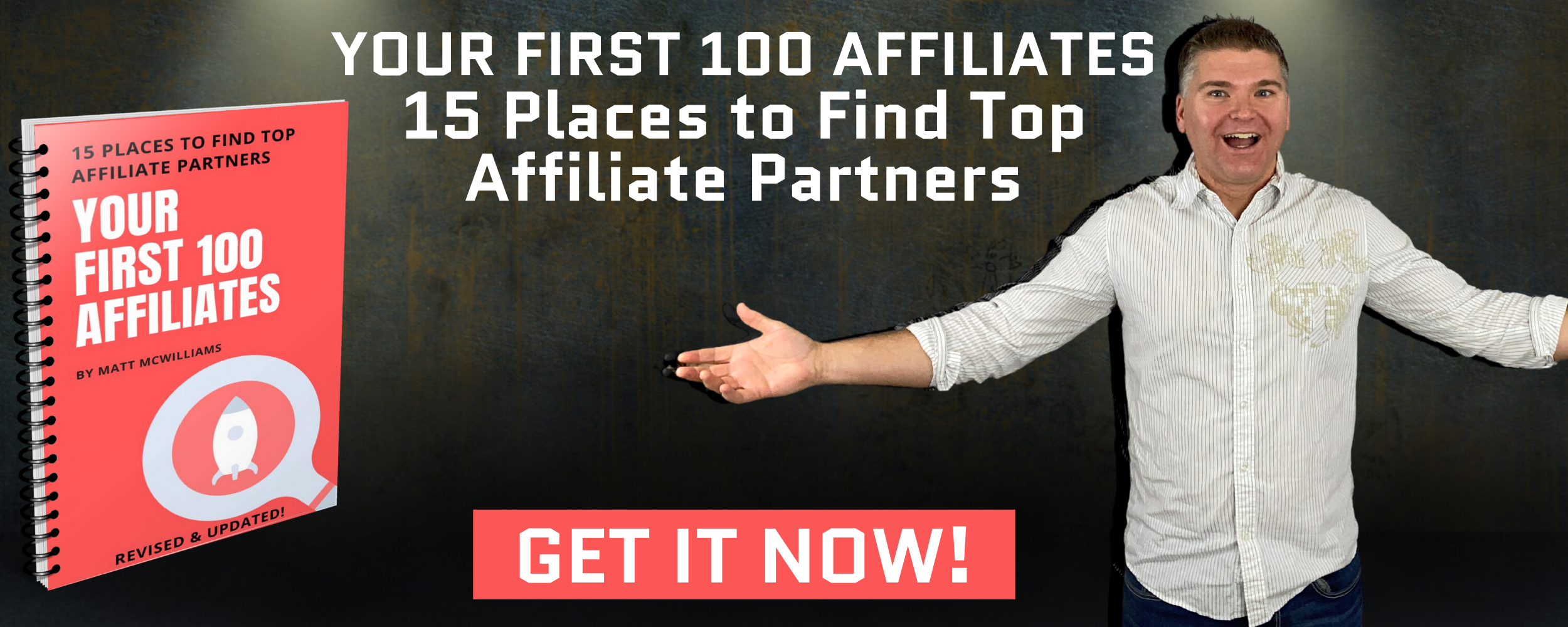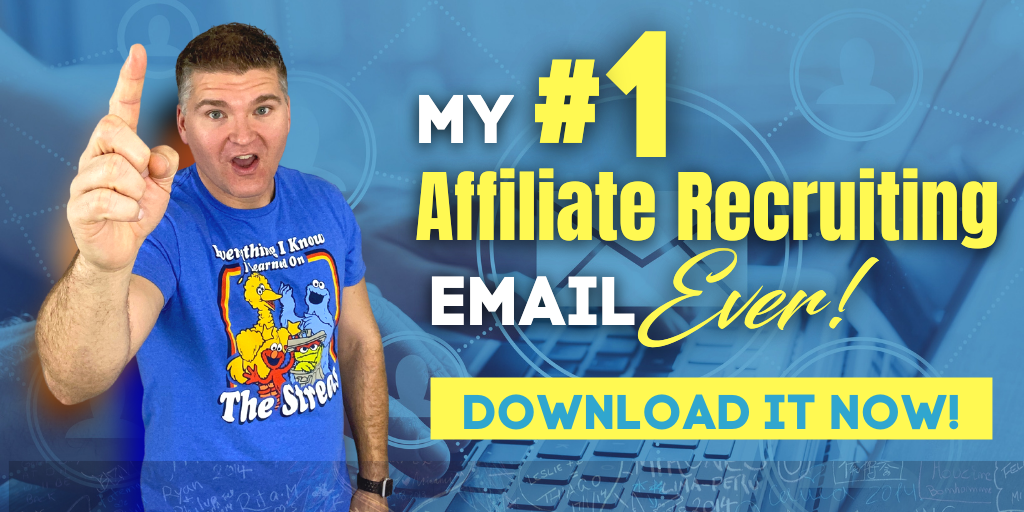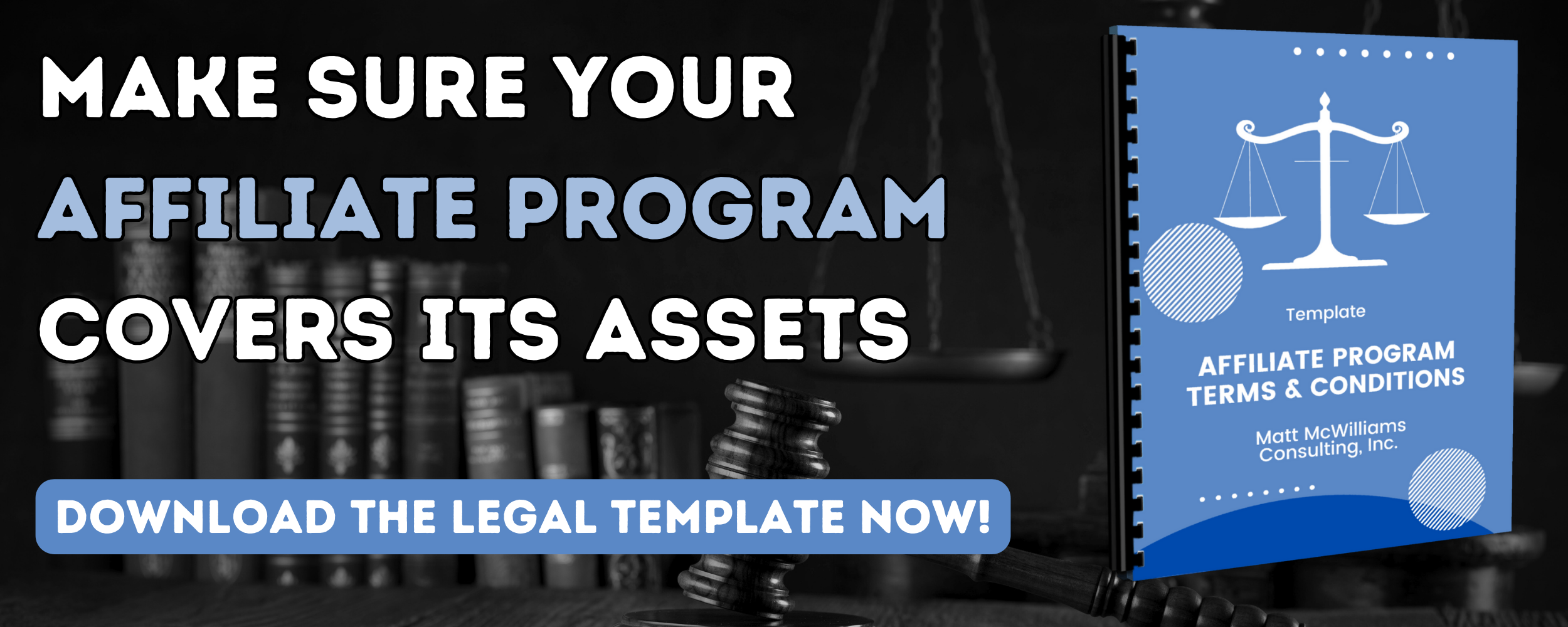If I had to go back in time knowing everything I know now after nearly 20 years of running affiliate programs, how would I start a brand new affiliate program today? In this episode, I’ll share exactly what I’d do every single day for 30 days.
Click Here for The Written Transcript of This Episode
If you are ready to take your business to the next level and start an affiliate program, start with my free report, Your First 100 Affiliates. This report takes nearly two decades of experience, trial and error, and lessons learned about finding top affiliates in nearly every conceivable niche and puts them all into one report. Grab your copy here!
LINKS MENTIONED IN THIS EPISODE
VIDEO: What is the Right Commission to Pay Affiliates?
Our Recommended Affiliate Tracking Platforms
How to Start an Affiliate Program for Free
Free Report – Your First 100 Affiliates
Our #1 Affiliate Recruiting Email Template
Affiliate Program Email Template
Podcast Episode – How to Negotiate Affiliate Deals That Benefit Everyone
What Affiliates Need to be Successful
Text me at 260-217-4619
Don’t Miss An Episode – Subscribe Below
Previous Episodes of The Affiliate Guy
How Laura Wardlaw Finished Top 20 in Only Her 2nd Affiliate Promotion
How to Avoid the Most Common Affiliate Marketing Mistakes
Why Your Affiliate Program is Failing (And What to Do About It)
How to Build Strong Relationships with Your Affiliates
How to Start an Affiliate Program: The First 30 Days
If I had to go back in time knowing everything that I know now, after nearly 20 years of running affiliate programs, how would I start a brand new affiliate program today? Well, in this episode, I’ll share exactly what I do every single day for 30 days to start an affiliate program. Welcome to the affiliate, guy.
Podcast. If you want to grow your income, serve your tribe, and enjoy all the benefits of affiliate marketing and having your own affiliates, you’re in the right place. Thanks for joining me today.
Let’s get started. So I teased this episode by saying what would I do? Here I am as I’m recording this, I’m entering my 19th year in the affiliate management world.
What would I do if I were starting a brand new affiliate program today? Well, the reality is we do this all the time with our agency. We take brands who don’t have an affiliate program.
Maybe they’re doing $10,000 a month and want to expand from there. Maybe they’re doing millions and they want to add an affiliate program. Or maybe they have like a really small affiliate program with a couple of affiliates and they want to take it to the next level.
We do this all the time with our agency. So when we start a brand new program, what does it actually look like? I am not saying these things from really that what would I do?
Standpoint. Now, at the same time, I’m going to walk you through what we do when we start a brand new program. But I’m assuming you can’t spend 8 hours a day.
So I’m going to make that assumption that you’re not like us, you’re not doing this full time. When I started my first affiliate program, I wasn’t doing it full time. I spent about three to 4 hours a day.
I was also running our sales department and I did all of our marketing and our SEO. And the very early stages of my first company, I was the customer service manager. So our customer service person, I still had to spend 1520 minutes a day with her and I had to spend 30 minutes a day with the support staff and I had to spend another 20 minutes a day with the sales team.
And like I said, I was doing all these other things. So our affiliate program, I really only spent three 4 hours a day. As we expanded it, when we suddenly were doing $50,000 a week for our affiliate program, I began to shift that to closer to full time.
I spent five 6 hours. I never was actually a full time affiliate manager at my first company, the one that I’ve shared many times, hometown quotes, we built it into over a million dollars a month in about 18 months. I never was full time because had other responsibilities.
I was on the leadership team. I was one of the founders. I managed our quality control department and ran the It department for years and all these things that also added on to my responsibilities.
But naturally as the thing grew, I spent more and more time. But for today, we’re going to say that you can spend 2 hours a day. If you had 2 hours a day to focus on your affiliate program, how should you spend it?
How should you spend that 1st 60 hours? And I’m going to go against what a lot of people teach, a lot of people out there. They teach spending a lot of time in prep mode.
You got to do all these things that we’ll talk about for the first few days that you have to do, but they say to do them for months and research and all these things. And I don’t believe that. The reality is, if you do this the right way, the way that I’m going to teach you today, the prep mode side only takes a few days.
I want you into money making mode quickly. And part of that is psychological, you’ll see as we go along. Part of that is just the psychology.
If you spend three months planning and prepping, it can get really boring. The reality is this isn’t the 1950s. Back in the 1950s, humans could spend months and months prepping and then have their payoff, right?
I don’t want that for you. I want to get you to the point where maybe you’re only making $1,000 a week, $2,000 a week from your affiliate program, but you’re seeing some results. It then makes it a lot easier to go back and do a little bit more prep when you’ve actually seen the results.
There was a study done years ago. They took couples who were doing wedding invitations. What the heck does this have to do with affiliate marketing?
Just follow me on this for the next minute or so. The technically most efficient way to do this is to set up what amounts to an assembly line. Again, this is two people.
A couple, right? If you’ve got 100 people, what I’m about to say works, but we don’t have 100 people to do this. You got usually one or two of you doing affiliate management.
And right now I’m pretending there’s only one of you. So they did this study with these couples. What was the best way to do wedding invitations?
You’ve got step one, fold the thing. Step two, you got to address the envelopes, put a stamp on the envelope, lick and close the envelopes. All those steps, right?
They said what was the most efficient way to do it? How did they get done the fastest? And you would think it was let’s say I’m addressing the envelopes.
I’m just going to one person’s addressing the envelopes, one person’s taking them and licking them and closing them. And that’s all they’re doing. And you get 300 envelopes or papers folded and then 300 envelopes stamped and 300 envelopes done and you do that or you do them one by one all the way through, or like, you do five.
This is what they found was actually the most efficient, was five to ten, where you address five to ten, you fold five to ten, you stamp five to ten, and then you get them done. Part of it is the psychology of at the end of that first day, you spent an hour and all you had was 300 folded things. But at the end of the other version, you had 50 completed wedding invitations.
And there was something psychologically empowering about that. So the way that I’m suggesting to do this takes both the practicality, the psychological elements and all of the elements you could possibly think of into consideration here. So our first week, though the first week is the planning and preparation phase.
One week. One week of planning and preparation, roughly ten to 15 hours at most. So Monday morning, first two days, monday and Tuesday, I’m going to spend on just kind of the structural work.
I need to come up with a commission structure. So what can I afford to pay? What’s going to be attractive?
What’s the competition paying you? I’ve talked about this so many times. I’m going to link to those episodes and a video in the Show Notes.
I’m not going to dive into that. I did about 15 episodes ago. I talked really in depth about this, but I’m going to spend a couple of days doing the research.
This is the boring part, doing the research on what commission I need to pay, what are my goals, right? What types of affiliates can I bring on? What are the products that we have that we want to pay a commission?
Or are there different commissions on different products? What’s working in our own marketing? This is the research phase of all of those things.
Two days. That’s all it takes. Two days.
Wednesday, Thursday, days three and four. I’m going to pick a tracking platform so I have recommendations. If you go to Mattmcwains.
com Toolbox, I got a couple of recommendations on there that I recommend for people starting out. These are not for people.
If you got a multimillion dollar affiliate program already, my recommendations are not what I would recommend for you. So you can email me and I can talk to you privately about those, or you can feel free to text me if you want. That’s usually a better way to get me.
Just shoot me a text 260-217-4619 and I can make a recommendation just based on it’s. So relevant to so many factors is what I’m saying there. But when you’re starting out, go to Mattmcwanes.
com Toolbox. I will link to that in the Show Notes.
I’ve got my recommendations there. You got to pick a tracking platform and you got to set it up, and you got to configure the tracking and customize the settings and work with the tech stuff. If you have a tech person, or if you’re doing yourself, there are a few things.
Takes about three to 4 hours to get that done. It’s not 20 hours, like two weeks, three weeks, like some people think. Now you could do it for free and with literally no platform.
I have an article that I’ll put in the Show Notes that walks you through how to do that. There is a way to do this again for free and no extra software. It is not scalable, as I say in the article.
It is not scalable. But if we’re talking about getting a program up and running in 30 days, and again making a few bucks, how much easier is it to go spend? Most tracking platforms that I recommend are on the high end.
We’ll go $100 a month. But how much easier is it to spend $100 a month? When you’re making $2,000 a month?
It’s a lot easier. And so you can do this for free. I’ve got the article.
Just go. If you’re interested in doing it for free. No new technology for the first, say, three, four months.
Go check out my article that’s in the Show Notes. And the big thing here is I just see far too many people. They get caught up here and they take weeks and weeks, even months on the tech.
Do not let the tech hold you back. It is so much easier than when I first started. What I did to start my first affiliate program.
To give you some idea here, I had to go message our developer. This was in late May of 2005. I had to message our developer and I said, we’d like to start an affiliate program.
He’s like, what is that? I was like, exactly. I said, here’s what it is. Here’s what we need to do. Boom, boom, boom. Can you code this? And he said yes. I said, how quickly can you do it? He said a week. I said, can you do it in five days? He said, I can. And we hand code it.
He hand created this. I was at his mercy. If he had taken ten days, it would have been ten days before I could do anything. Thankfully, he got it done in about four and we were able to get things up and running. But that was four days of him working ten hour days just on this. No other coding.
Spent 40 hours creating this system that we then expanded and expanded and expanded from there. But initially that 1st 40 hours. Today you can get an out of the box solution and plug it into your website.
There are plugins, literally, if you’re on WordPress, you can have up and running in 15 minutes. That’s how easy it is. Then the next few days to finish up week one, you got to take care of the legal stuff.
That’s like day five, right? The legal stuff. Maybe tipping into day six. What are your terms and conditions? What are your rules? When do you pay?
I suggest coming up with a system for paying that is consistent. For instance, with most of our clients, we pay on the first business day of the month following the end of returns. So here’s how that works.
Need help activating your affiliates? Use my proven email templates for getting inactive affiliates in the game and making sales! Get them here!
You make a sale in June. We pay on the first business day of August. Most of our clients have about a 30 day return policy.
So all sales from June, if you bought on June 30, you fast forward to the end of the return period. It’s July 30. And then we pay on the first of the next month.
Occasionally this gets us in a little bit of trouble, like with February, and it’s fine. I tell our clients all the time, you’re going to eat basically 0. 1%
I think you can afford to do that to keep it consistent. So that’s how we do it. But you need to determine, are you going to pay weekly?
Are you going to pay monthly? Do you have a 45 day return period? Are you going to pay 70% of the commissions right away and then hold the other 30% for returns?
There are all these options. You need to spend time thinking about what they are. What are your terms and conditions, what are your rules?
What are your guidelines for your affiliates? There are so many considerations. Here what I’m going to do. If you will send me a text. I mentioned this before. This is something we’re going to be releasing later this year.
So I’m going to make sure when you text me that I add you to a list to make sure you’re the first to get this. It’s going to take us a couple of months to put together. We’re going to create a guide for this, for how to create terms and conditions, how to put together rules for an affiliate program.
You can copy and paste them, delete the parts that aren’t relevant, how to tweak it, et cetera. So text me 260-217-4619. Just let me know you’d like that and you’ll be the first to get it when we come out with it.
I don’t know when that’s going to be exactly. Sometime in the fall. We’re recording this in August. Well, released in September of 2023. It’ll probably be ready sometime in October, November. But you need to do that. That’s another foundational thing. Just you got to take a day to do it right now. Probably take a couple of hours to do it.
In the future, when we have that thing ready, that’ll take you about 20 minutes on the high end. I better take what we’ve done over the last 20 years and make it stupid easy for you. In the final part, as we finish up this foundational stuff, the boring stuff, the pre work, the prep work, you got to create at least some promotional resources for your affiliates, okay?
If starting tomorrow, day eight, we get our first affiliate to say yes, we need to at least have something ready for them. So do we have links for them? Do we have a couple of banner ads, social media graphics for them?
Do we have a couple versions of swipe copy available? We don’t have to have it all. We will come back and create more.
We will improve upon it. We will add but initially, do we have the basic links, the basic graphics, the basic swipe copy ready for them? So that’s one week of prep mode.
One week, and then it’s on to the fun stuff. Week two, all about finding, recruiting, onboarding, and activating affiliates. So Monday and Tuesday of that second week, the first two days here, we’re at day eight and nine overall.
I want to identify who are some potential affiliates. I want to research some potential affiliates who align with our niche and our target audience. So, first of all, start with who you know.
Start with who you know. Want you to do something here. Want you to press pause. I’ll give you a moment. Press pause. If you’re driving, use your voice thing.
Make a list, write down some names if you’re able to. Who do you know who could potentially be a good affiliate? So press pause. I’m cool with that. Press pause. Write down voice, record, whatever.
If you’re driving, like I said, just think, and then write them down. When you get there, pull over if you can. Let’s get some names in some sort of a document, people that you’re going to ask to be an affiliate.
Now, if you don’t know anybody, there’s plenty of other ways, but that’s the starting point. All right? We want to start with these people that we know because we know them and they know us, and they like us and they trust us.
They’re going to promote you because you’re you. That’s why they’re not going to promote you because you converted 17. 3%
from click to lead and 9. 3% from lead to sale, and you have a twelve point, 42 cent EPC.
That’s not why they’re going to promote you. They’re going to promote you because you’re you. So when things inevitably do go a little haywire, and they will, things will break.
Your tech will break. You will pay too little. You will make some mistakes. You will not have the right copy. You will have typos. They’re not going to be like, well, you suck, and I’m never promoting you again.
You’re not going to burn a bridge. It’s not that big of a deal because you have that preexisting relationship. So these are the perfect people to start with.
I don’t care if it’s two, start with those two. From there, these couple of days, you want to start watching other affiliate programs immediately, go sign up. In fact, really, this should be day one.
This is one of those ones where it’s like, oh, it doesn’t fit into that category. But on day one, spend 30 minutes, find five affiliate programs in your niche and sign up for them. Don’t find 30.
It just takes too long. We’ll come back and find 25 more later. But for now, just find five, sign up for them, get their emails, get their leaderboards, join their Facebook group of affiliates or whatever else, and start identifying who are their affiliates.
I mentioned groups, forms and groups are a great place. Your customers I don’t have that many customers. Cool. You got, what, five, 2100? Ask them. Turn your customers into affiliates, your competitors Google, we’ve talked about this. So here’s the thing. You don’t know where to find them. Got two suggestions for you. Number one, we got a free report called your 1st 100 affiliates. Have talked about it a bunch on the podcast. Mattmcwilliams.com/first100.
Go check that out. Link to that in the show notes as well. And then if you want the premium training where we walk you through step by step on everything about identifying and how to track them, how to reach out to them, how to get them active, how to follow up and all that, find affiliates now is our course findaffiliatesnow.com. I will put a link to that as well, and it walks you through all those things and a bunch more that I just talked about. So for now, day eight and nine here, we’re just going to make a list.
We’re just going to put these in a spreadsheet so we can track we want to put them in a spreadsheet with their full name, their first name, their last name. I’ll explain that in a second. Their email, where you found them, any other information about them, notes, things like that.
The reason why we separate their full name, their full name makes it easy to check for duplicates. If you’ve got the ODS know two Tony Anderson’s, pretty slim. Oh, look.
And they have very similar email addresses or something like that. So we use their full name for purposes of catching duplicates. We separate their first and their last name.
So it’s easy to do mail merge, reach outs. We’ll talk about that in a little bit using a tool called GMASS. So days eight and nine are all about just identifying potential affiliates.
Days nine and ten, we got to outreach. We got to reach out to them. We got to start onboarding some people. So we’re going to reach out to potential affiliates to start with via email. We’re going to reach out via email. And I want to develop a message.
If you want to grab our best recruiting email that we’ve ever used, I’ll put a link to that in the show notes as well, mammicwames Combestemail, and you can use that email to reach out to potential affiliates. So we reach out to them using that email or a variation of that email, then we bring them on board. And we want to start to develop an onboarding system.
Initially, it’s going to be a little bit helter skelter, but you’re going to notice that you do the same things over and over again. You’re going to reply in the same way. You’re going to make sure they get swipe copy and their links and their graphics and that they get access to the affiliate portal, if you have one.
Now, I didn’t mention develop affiliate portal because we said, how do we start an affiliate program in 30 days? Affiliate portal is not part of that. Again, I see this so often, I got to get the affiliate portal perfect before I get affiliates in.
Why? We take a month to create affiliate portals. We charge a few thousand dollars to create them for people that aren’t our clients who just need it. And we get these all the time. Can you create an affiliate portal for me? Yeah. $4,000. $3,000, depending upon various factors. It takes us like 50 hours to create that thing.
It’s great, but I don’t recommend waiting on that to start your affiliate program. You do that later. You do that later. But you need a welcome email. You need to have your graphics somewhere. Just put them in Google Drive for now.
Is that the best place for a professional affiliate program to have their graphics? No, I think it makes you look cheap if you have them in Google Drive when you’re running a multimillion dollar launch. But when you’re a brand new affiliate program, having them somewhere, I don’t care. Put them on a page. Doesn’t have to be a login page, doesn’t have to have everything perfect. Just put it all in one place.
Get my #1 affiliate recruiting email (the one I’ve personally used to recruit thousands of affiliates in dozens of niches). Grab your copy here!
Again, you don’t need like some fancy system, but you start to streamline and document this onboarding process to get them active. Come up with an activation campaign. Like, hey, if you make three sales in the next two weeks, you get this thing.
If it’s $1,000 course, for example, and let’s say let’s just for even math, let’s say it’s $1,000 course, and you pay a 50% commission, they’re already going to make $1,500 in commissions. What about paying a $500 bonus if they make three sales in the first two weeks? And you go, well, gosh, that really eats into my margins. Well, no, it doesn’t. You made $1,000. If they made zero sales, you made zero.
You profited $1,000. And if I can get somebody to make three sales in two weeks, well, they can make three sales every month or five sales every month. So I’m even willing to say you make three sales in the next two weeks, I will pay you $1,000 and basically almost make nothing on those first three sales because I don’t care about the first three sales.
Stop being cheap. I talked about this a while back, and I just don’t be cheap with these things. Not to get people active.
To get people active, you sometimes have to spend a little bit of money. It’s just like in retail world, they call them loss leaders. You got to be willing to lose $2 on the thing that you have that cost $10 that you basically give away, normally cost ten.
You paid five for it, and you sell it for five and you make nothing on it. Or you even lose a couple of bucks. But then they come in and they spend $300 on other stuff that you’re making 20% margins on.
Same concept. So again, day ten and eleven is all about reaching out to them and getting them onboarded and streamlining that onboarding process. Days twelve through 14 are just more finding and reaching out.
Again, the objective here is to get some low hanging fruit fast. To get five to ten affiliates who can do $100 to $500 each in sales. That’s not to get the whales.
It’s not to get hundreds of affiliates in just a few days. We’re just trying to get some momentum at the end of this two weeks. If you’ve made any money, you’re on the right track, and if you haven’t, you still might be on the right track.
But if we could get one affiliate who makes $100 in sales in the first two weeks, boom. You spent the first ten days basically just prepping. Seven days prepping, and you’ve already made $100.
That’s awesome. That sets the wheels in motion to say, okay, this is worth it. I had one of our coaching clients, so we have a group called the Affiliate Managers Club.
If you’re interested. Again, just text me at the number I mentioned earlier, 260-217-4619 and some information. We’re not actively looking for people for the Affiliate Managers club right now, by the way.
But if you want to be put on a waitlist, just text me and we have a lady in there. And the first week, I said, okay, tell me how much time you can spend each day. How much time can you spend each day?
She said, I got an hour. An hour a day? Okay, well, then we’ll make a plan for you for an hour a day how to get this thing up. And the program is doing, like, probably $10,000 a month right now. It’s not nothing. So we meet two weeks later.
We meet, we have our next meeting. She’s like, hey, I got some news. I went to my boss and I talked to him. Here’s what we’re doing. Here’s how much money we’re making. And we got a little bit of momentum.
She’s like, he said, once you spend 4 hours a day, four times increase in how much time she can spend. Why? Because she had a little bit of momentum.
If that program were doing zero but held a lot of promise, it’d be a lot harder for him to commit to her spending that time. So the idea is just to get a little momentum going here. So we talked about weeks one and two, week three days.
This is 15 through 21. It’s all about networking and relationship building. Week three is when we start to focus more on the long term.
Now, we want to continue to nurture the affiliates you already have from last week. We want to continue some of the low hanging reach outs that we talked about. We also want to start thinking of ways to monitor affiliate performance.
How often? Again, with 2 hours a day, I recommend once a week for about 15 minutes. We check in on stats, who’s sending clicks, who’s dried up, who’s converting well, what are they doing sales wise?
Who are my top performing affiliates? Who are my low performing affiliates? Who’s doing really well in an area with a product maybe we struggle with who’s doing really well with one product but not with another that they’re also promoting.
I want to maintain open communication with affiliates, sending out regular emails, sending out affiliate newsletters, having the portal, having a Facebook group or some other group that you have for your affiliates. We want to continue, obviously, to provide ongoing support and answer questions and any concerns they have. But we also want to start in here to network with potentially bigger affiliates and start building those relationships.
So this is when we start connecting. Who’s our dream 100? Who are these? Maybe not like, the A plus initially. We’re trying to get, like, more C’s, right? They have smaller lists, maybe 2000 to 10,000 followers and a list of 1000 to 5000 people.
Now we’re looking, okay, who’s got the list of again, we’re starting out. We’re new, so getting somebody with a list of 20 to 50,000 people, and we’re going to start engaging with them, become friends with them on Facebook, engage with their content, just open a dialogue that doesn’t with no objective. We’re just making friends and influencing people.
We’re just getting to know them so that over time, we can start to develop that relationship with them. All right, so we’re thinking long term here in the third week, we’re starting to think through some more of the long term stuff. Because the reason I say we start this in week three, and the truth is, if you start it in a week four to be the end of the world.
No, of course not. What I don’t want to do is never have you start it, that you’re always focused on the here and now that we’re never developing any of those long term relationships that turn into potentially huge affiliates. Okay?
So I say to spend some time here in week three, because if we don’t, we’re never going to get to it. You’ll never have time. If you don’t make time and develop the habit here in week three, we’re going to develop the habit because you’re already going to be spending an hour a day during week three managing the affiliates you already have, doing strategy calls with them, continuing this stuff from week two.
So if I don’t develop the habit of 30 minutes a day, hour a day, every day, developing those long term relationships, it will never happen. It’s why I have to put on my calendar, because I’m not one of those people I mentioned before. I don’t check Facebook.
If I don’t put it in my calendar Monday through Friday, I do it typically in mid morning, usually sometime between 930 and 1030. I put it on my calendar to just go check it for 15 minutes. And I respond.
I leave a few comments. I engage with a few people. I message a few people. If I don’t do that, I won’t intentionally do it. So I’m intentional about it. I’m intentional about sending texts to people.
I mentioned it before that I have specific times when I send texts, because if I don’t do that, I will never do it. If I don’t make it a part, it’s just a joke. Like, if I don’t put it in my calendar to take a shower, I probably would forget because I get caught up in my work and the other things that seem like they’re a little bit more pressing.
I have to put those long term things. Leaving that comment on somebody’s Facebook post does not make me money that day, the relationship. I just texted a guy.
Let me see if I can pull this up here. I just texted a guy, and I mean, long story short, I just, hey, man, how’s it going? He’s like, Dude, I ended up saying the very end.
He actually said, I was going to reach out to you today anyway, which is funny that you texted. We’re currently doing this. Would love to see what you have in mind.
I’d love to have you mentor our new affiliate manager, and also I’d love to have you run our launch coming up. That text could be worth well into six figures, but was it that text or was it the years of nurturing that relationship? I would argue it’s the latter.
It’s the years of nurturing the relationship. So if we’re not intentional about this and don’t start early, we’ll never develop the habit. It’s a habit.
So we got to start in week three, week four through the end of the month, it’s all about scaling and refining. So this is where we start to think of things. We spend a little bit more time thinking of contests.
What are some incentives, some performance based bonuses, special promos for our top affiliates, contests to get some competition going and get them to promote more. So I’d probably spend a couple of days, day 21 through 22, 23 in there doing that. Now we want to get in day 24 through, like, 26 seven.
I want to start thinking about, okay, what content do our affiliates need? What training do they need? So think about, like, how can we train them?
Are there some PDFs we can give them some training, some webinars, some guides to help them. This is something that we’re looking at. Doing for our clients is some PLR type stuff where we license our training to clients and say, slap your logo on it and bada boom, bada bing.
But these are the types of things where, okay, how do we train our affiliates, how do we give them content suggestions and how do we start strategizing with them to create better content and better promotions? And then the last bit of the month, we’re kind of back to some of the boring stuff. We got to start analyzing the data.
We got to start planning more for the future. So we’re going to look at, okay, here are this first four weeks, these last two, three days of the month, how do the first four weeks go? What worked, what didn’t?
What’s the data tell us? Where can we improve? What are some strategies we can use to get more engagement and to start growing the program in the next couple of months?
And then we rinse and repeat and we find, okay, in month two, we spend a lot more time on finding and recruiting and onboarding. And then we shift from there. Again, this assumes have 2 hours a day. If you have less, this can run for 60 days. You only got an hour a day. It’s probably going to run for 60.
If you have more, you can cycle through this in less than two weeks. And then from there again, I would continue with finding and recruiting in the first month, with all the logistics and the prep work and the tech stuff and the rules and the legal stuff, you’re only going to set the legal stuff up once, probably. You may never change that.
And if you do, it’s going to be a quick change here and there. So in that time, the finding and recruiting in this phase was only about a third of your time. The relationships and the ongoing support, maybe 20%.
All the other stuff takes up 50%. But after the first month, like I said, the logistics and all that kind of stuff only takes up a tiny percentage. So as you shift into like months two through twelve, the maintenance and the monitoring, like the FTC stuff for example, we talked about that a few episodes ago.
Those types of things maybe take up 10% of your time. Your current affiliate support in that first year usually takes up only about 2020. Finding and Recruiting you might spend 60 75% on finding affiliates, relationship building and recruiting affiliates.
And as you grow, it shifts. With a mature program of more than 1000 affiliates, for example, monitoring might take up 20%. Those current relationships and support can take up 50 60%.
Your time to find and recruit affiliates could be as low as ten to 20% because it shifted. You have over 1000 affiliates. I mean, when I managed programs like Shutterfly, like Adidas, where we had tens of thousands, finding and recruiting new affiliates was only five to 10% of my week.
I mean, I literally only spent 3 hours a week on average doing that because I spent 30 hours on support and relationship building with my current affiliates. And then I spent about five to 7 hours on monitoring and maintenance and just setting up promos and things like that. So I was only left with again during the busy season.
From mid November through Christmas, it was 0 hour. In the summer. I might spend as much as seven or 10 hours finding and recruiting new affiliates.
So it begins to shift over time as far as in those 1st 30 days. Some tools just to consider we talked about the affiliate tracking. Some sort of a software to track sales and payouts.
Or like I said, start for free with no tech. If you need to, you can go check out the article for your communication tools. I talked about GMAS earlier.
I’ll put a link to that in the show notes. It’s my favorite mail merge tool that does everything you could possibly need with an affiliate program. And there’s a reason why you want to use this or some other mail merge tool.
This is just the best one is GMAS. In my opinion. I’ve used five or six different ones. It’s by far the best. I’ve used easy mail merge. It’s pretty good, but not as good as GMass. I’ve used yet another mail merge. Yam, we recommended that for years until GMAS came along. I’ve used a bunch of others.
The reason you want to use this and not your regular email tool like MailChimp or ConvertKit is because you don’t want your affiliates to unsubscribe from your normal communication. So for instance, most of the things I promote, I’m also on their list. Sometimes though, and I’ve seen this happen, I’m on their list twice and I unsubscribe, so I only get one copy.
Well, that unsubscribe was the email account that was associated with the affiliate account. Other times I might not really want their communication, I don’t really care, I just want their affiliate communication. But I unsubscribe from the entire thing.
Make sure that your affiliate program has a solid agreement (AKA Terms & Conditions). To make things simple, grab my template here!
So you want to use a separate tool like GMAS. It’s better deliverability anyway, more personal, et cetera, et cetera. Obviously, like I said, you got banners, text links, all those creatives.
I’ll put a post in the show notes called what affiliates need to be successful. It’s got a list of everything they need to be successful, and you want to start developing that. You’ll need webinar software to do the training. I think zoom is greater. You can use Google, Meet, whatever you do right? These are the types of things you’ll need.
Again, this is assuming you have about 2 hours a month. If you have less, spread it out longer. If you have more, the prep, the logistics, the tech stuff should still only take a week.
All right? With the one part, even if you have if you’re full time, 8 hours a day, then get the prep and the logistics and the tech stuff done in three days and be done with it two days maybe be done with it and then move on from there. Then you just spend more time each week finding and recruiting and spend more time doing that long term stuff as well.
So your next steps after today, we got to talk about the next level. So partially this 1st 30 days, what about days 31 through 61 through 90 and so on? I’ve got a free training coming up called How I Built a Million Dollar a Month Affiliate Program in only two years without any connections or credentials.
So we talked about recruiting earlier. We touched on that. What if I don’t know anybody? What if I pulled over to the side of the road and wrote down nobody or wrote down one person? How do we build a million dollar a month affiliate program? I’ve got a free training coming up on that.
I will put a link to that in the show notes. It’s mattmcwilliams.com/millionamonth. All right, so that’s your next step is to register for that training. Come and see me on that, and I think you’re getting a ton of value out of that.
I’d also love to hear from you what your biggest takeaway was. So shoot me a text. I would love to hear your biggest takeaway from this episode.
I’ve got links to everything. We talked about a ton of things today in the show notes, the video on what’s the right commission, my toolbox for the affiliate tracking platforms, how to start an affiliate program for free, YOUR FIRST 100 affiliates. Find affiliates Now, I’ve got the affiliate program email template in there, got the podcast episode on how to negotiate affiliate deals, what affiliates need to be successful, GMASS, and of course, the training I just talked about, about how to build a million dollar a month affiliate program.
And then make sure last thing here you hit subscribe because you do not want to miss the next episode. I’m going to talk about how to double your affiliate program in 90 days.
Just assuming you got a little bit of progress going here, how do we double that in 90 days? I took my first affiliate program back in 2005 from about $120,000 a month to $260,000 a month in a little bit less than 90 days. I took Legacy Learning Systems. They had done about 1. 4 million the year before.
So whatever the math is on that, about 350,000 in a quarter to a quarter, where we did a little bit under 700,000 in about 90 days. And I’ve done the same thing over and over again for our clients. So how did I do it?
Well, I’m going to share exactly how in the next episode. So make sure you hit subscribe so you don’t miss it. I’ll see you then.
Questions?
Text me anytime at (260) 217-4619.
Or…check out some of my free reports to help you get on the right track:
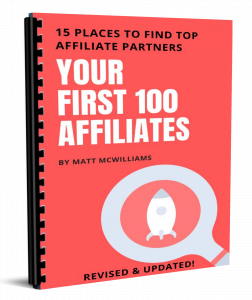 |
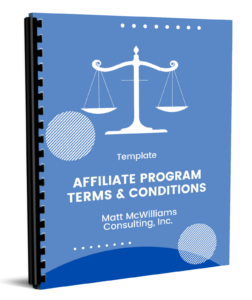 |
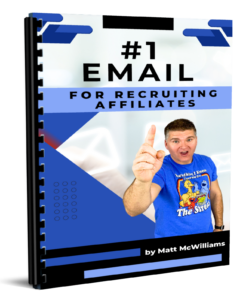 |
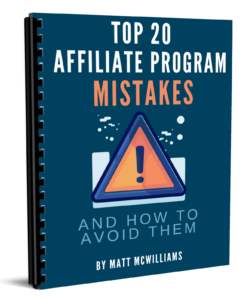 |
 |
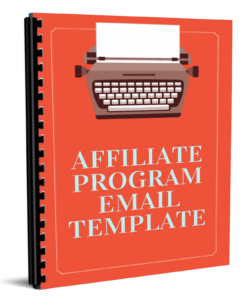 |
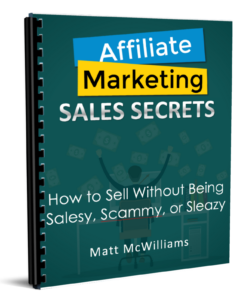 |
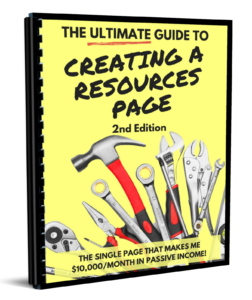 |
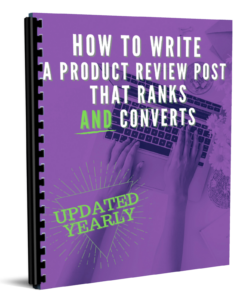 |
